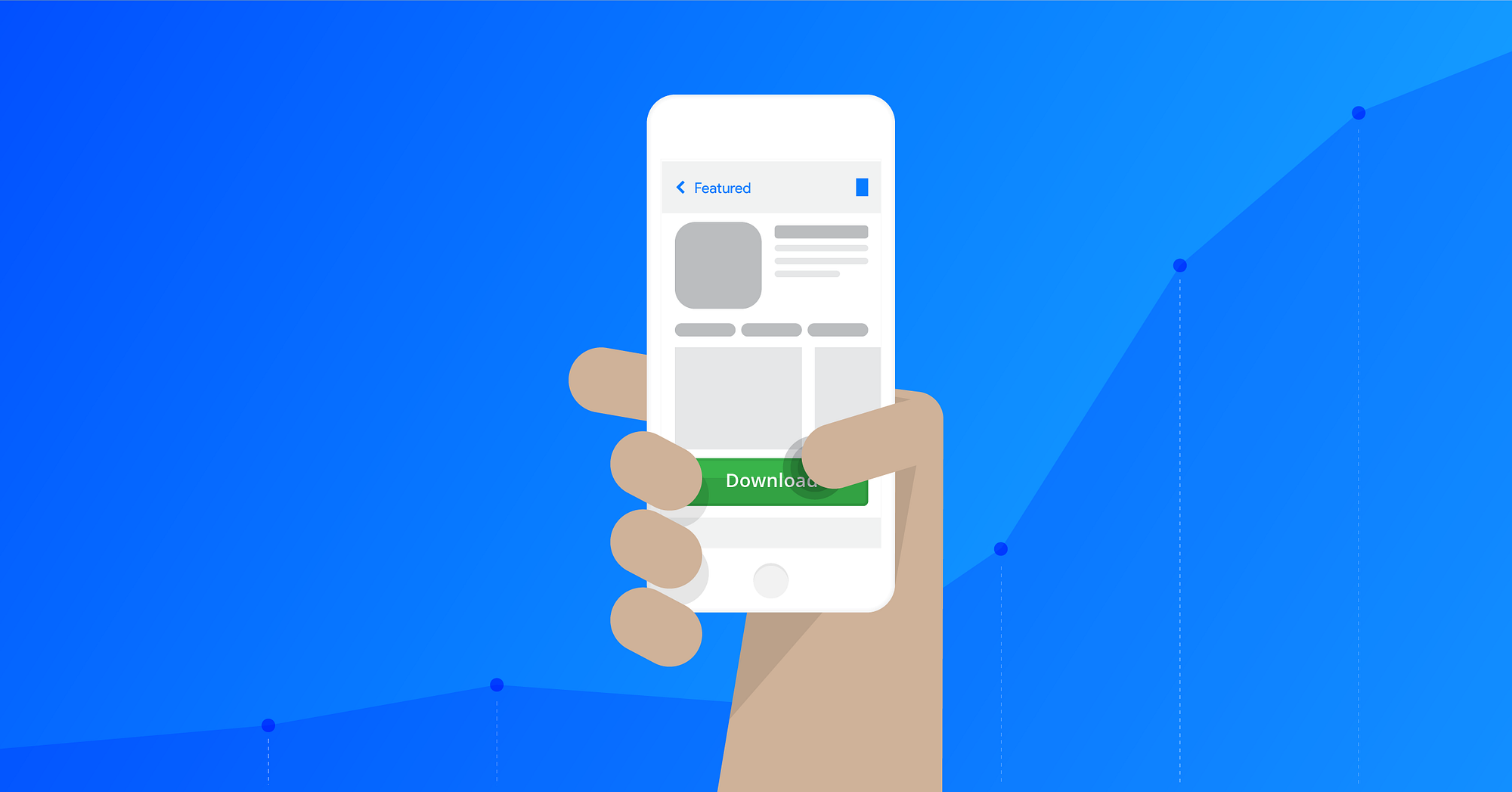
I talk to hundreds of mobile developers all around the world — they come to attend or speak at our Mobile Growth Meetups, contact me over email, or chat with me at conferences. From SF to NYC, Amsterdam to Bangalore, Bucharest to Hong Kong, the questions are always the same: what can these mobile developers and marketers do to drive growth? How can they reduce their budget and still drive more app downloads? Is ASO the key, or is it finding the right person on the App Store team to get a coveted feature?
Unfortunately, as more and more developers are starting to realize, the App Store is not the solution. With more a thousand new apps submitted each day (let me emphasize that: one thousand new apps each day!) it’s almost impossible to stand out. The new iOS 11 Apple App Store design is not a solution — it shows even fewer apps on the main page than it used to. While Apple might believe this is better UX for the end user, this new design does nothing to help the chance of discovery via the App Store for a small app developer trying to get an app off the ground.
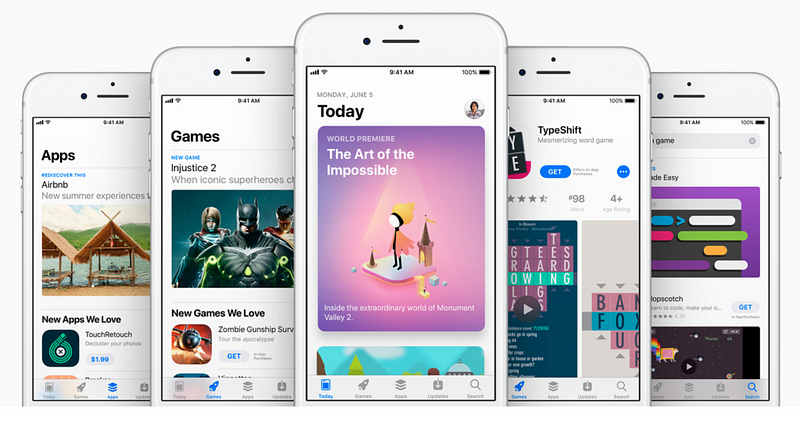
So what’s the alternative? How can a new app get discovered and drive downloads in such a crowded market without spending millions on advertising?
Here are some mobile marketing strategies that can help stack the odds in your favor:
Strategy 1: Forget about ASO — Focus on Your App’s Content
While many app developers focus on App Store Optimization, ASO is proving to be less and less relevant as the app ecosystem evolves. The top 10 search terms in the App Store are brands, and 90% of the top 50 terms searched are branded as well. While the App Store is figuring out its identity crisis, my advice to developers is give up on the App Store and focus on making your app content discoverable. Unlike the App Store, searches on the web are focused on intent. For example, if your app sells Nike red shoes, it might be practically impossible to appear in a search in an App Store for “shoes,” but you can work on getting the red shoes to appear in a web search, and from there you can get a user to download your app.
How can you get your app content indexed by Google? Here are the steps to make it happen:
- Make sure you have a website for your content. Don’t have one? Branch can solve this for you: we have a free product called Deepviews that creates an indexable simple webpage for each piece of content in your app.
- Make sure that your website and product webpages are mobile friendly. The best place to start is Google’s mobile friendly test. Some other things to keep in mind when building websites for mobile: configure viewports, space out touch elements, use legible font size, remove Flash,and work on loading speed.
- Add app indexing to your links.
- Configure your links to open your app if it is installed, and have a path for the user to install it if they don’t. Branch links also make sure these opens and installs are tracked, so you can measure which channels are performing best.
- Make sure your links are configured for deferred deep linking. You need to take users to the content they clicked on in search once they install open the app — this leads to a better first time app user experience, and can double retention and signup rates
Takeaway: making your app content discoverable in web searches returns a lot more benefit for your effort than ASO.
Strategy 2: Convert Your Web Users into App Users
In addition to making your app content discoverable on the web, you can use other methods to get users to your mobile website. These are often lot cheaper than buying app downloads.
Here are some strategies for attracting new web users and converting them into app downloads:
- Work on traditional SEO methods to boost rankings for your site, including inbound links, social shares, blogs about your app and app content, search ads, social ads, and more.
- When mobile visitors land on your website, show them a targeted interstitial or smart banner that takes them to download the app. Apple has a basic mobile smart banner, but it is not customizable. Branch offers both a free smart banner, and a premium upgrade that allows you to target users based on their visit, where they come from, etc.
- If your web visitors come from Google, make sure you show them banners and not interstitials. While banners don’t convert as well as interstitials, interstitials are penalized by Google.
- If your web visitors come from Facebook, email, or anywhere other than Google search results, you can show a half page or full page interstitial. Since users often find these more deterring if they are not familiar with your brand, we recommend not doing this on the first visit.Instead, target users who are returning to your site on a second or third visit.
- (Optional) Offer an app-only special promotion in your banner to improve conversion Jet gave a 20% off discount for app users and tripled their daily installs!
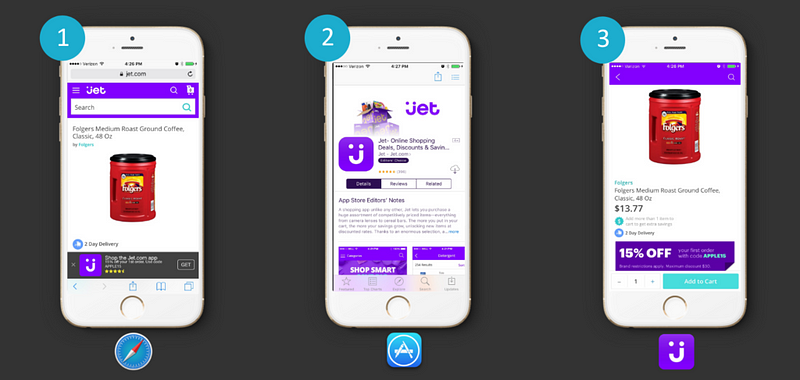
- For desktop visitors, use a text me the app landing page.
Takeaway: driving app downloads through your website can be a lot cheaper than running app install ads.
Strategy 3: Find the Right Allies
One of the best ways to find new, cheap, highly engaged users for your app is to find app marketing partners. You probably know who they are — the challenge is to convince them to work with you.
Here are some strategies that can help finding the right app marketing partner easier:
- Propose an experience where sending people to your app enhances the user experience of the other app. Here are two examples of partnerships that make that happen:
Yummly (a recipe app) and Instacart (a shopping app). When a Yummly user finds a recipe they want to cook, they can shop for all the ingredients through a link that takes them to Instacart, with all the ingredients automatically added to their Instacart cart. If Instacart isn’t installed yet, the user is taken to download it and the ingredients are still added once Instacart opens.
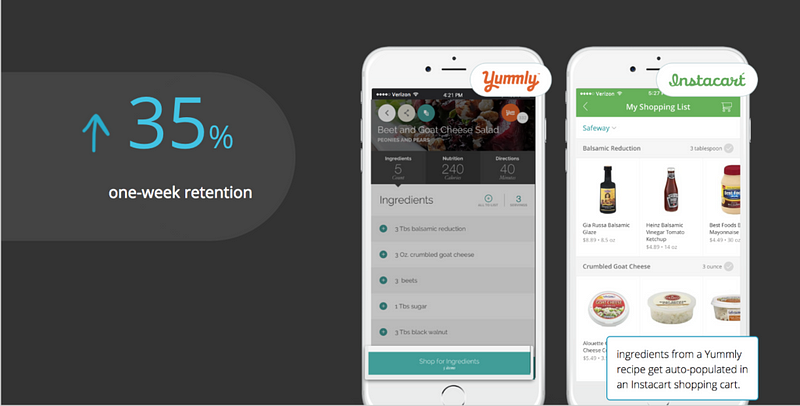
SpotHero (a parking app) and Waze (a driving directions app). As users are getting directions to specific locations in Waze, they can go directly into Spothero and find parking at their destination
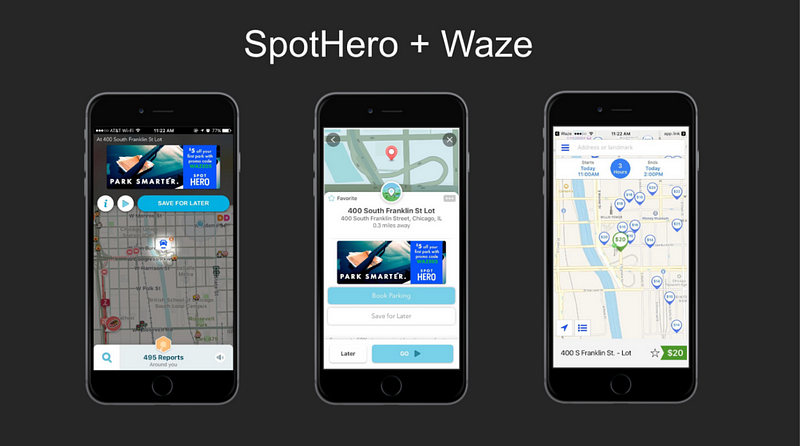
Make sure you track which users come from your partners and give them a personalized experience. Your partner will likely want to know how many new users they are driving to your app, if they come back, etc.
- (Optional) Incentivize your partners for each new install they drive.
Takeaway: seamless linking from apps that are complimentary to your services is a great way to get more users.
Strategy 4: A New Spin on Traditional Marketing Channels
When I moderate Mobile Growth Meetups, I always ask this question of panelists: which channel works best for bringing users back to your mobile app? The answer, whether from small apps or big, is always the same: traditional channels like email continue to outperform push notifications. But traditional channels can also be a great source for new app users. Charlotte Russe ran a mobile email marketing experiment where they sent their userbase email promotions with an app only discount, and they saw a download spike for their app with every such email.
Here are some other mobile spins you can put on traditional digital marketing channels to drive more new downloads for your app:
- Social. Promote app content into your social channels, helping boost SEO for that content and also driving new app downloads directly. Our friends at Goat (a shoe shopping app — yes I have a thing for shoe shopping examples) leverage their social channels by promoting their shoes and taking people straight into the app to check them out.
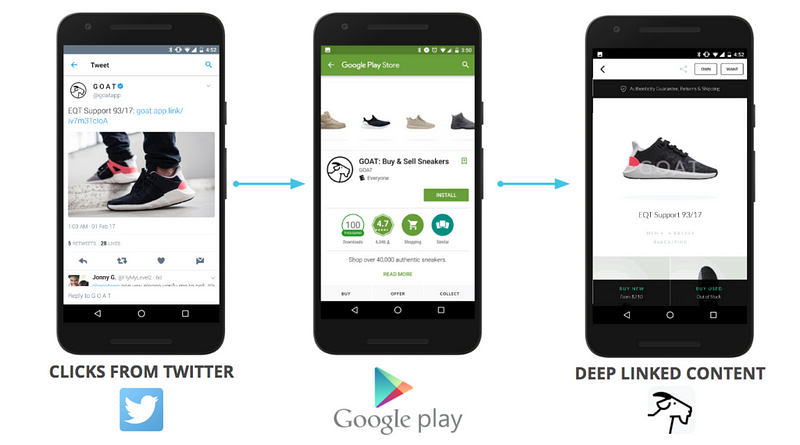
- Email. Use deep links in your marketing promotions. Our friends at Instacart increased their conversion from email by 6X when they sent users into the app instead of the mobile web.
- Search and Display Ads. Running ads for app content and deep linking users into your app instead of taking them to the mobile site can double the conversion of your ads.
Strategy 5: Build Virality into Your App
The biggest mistake new developers make is building and launching their app without viral mechanisms. My Branch co-founders and I made this error when we built our first app, a photobook printing app called Kindred. We were fortunate to get featured by Apple in Best New Apps, but because we had built only our core functionality without sharing or invites, new users had no way of sharing the app or the photobooks they created with their friends. We missed out on free referral traffic.
Here are some basic viral mechanisms you can build into your app:
- Content sharing. The most viral part of your app is its content. Apply basic principles to make sure your content goes viral: use emotion, appeal to ego, and give incentives. But keep in mind, not all content is created equal and the more engaging your content, the more likely it is to drive virality. Looking for examples on which emotions you should appeal to, and how to get started? Check out my introduction to app virality.
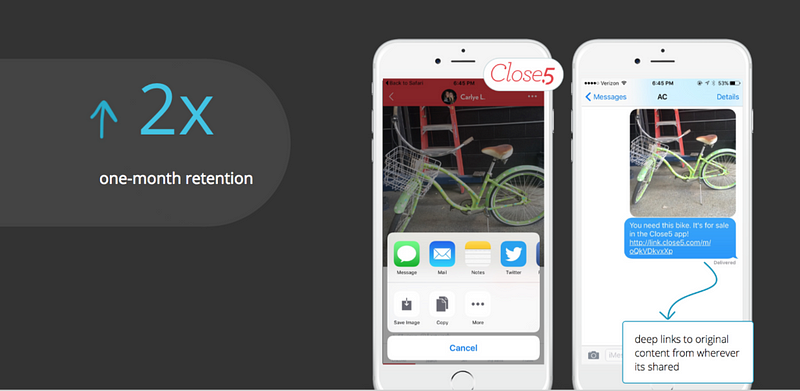
- Referrals. Incentivize users to share your app, and reward them when they drive app installs. Our friends at The League did this by implementing a incentivized wait list: when a new League users downloads the app, they are placed at the end of a wait list. But every time a friend they invite downloads the app, they move up. This strategy helped their viral growth in new cities as they expanded beyond the Bay Area.
- Double viral loops. The double viral loop concept was first described by Josh Elman. It means that by tracking when referred users engage with your app, you can notify the referring user of that action. Knowing their friend engaged will likely trigger them to come back and interact with the app, making them more likely to keep inviting other users.
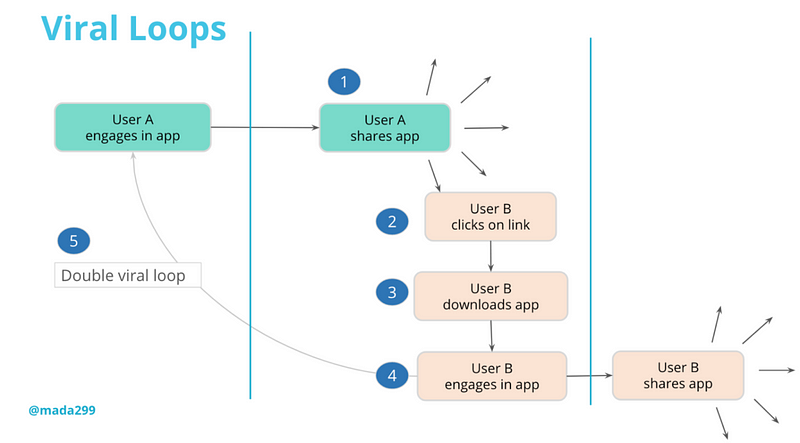
- Takeaway: add viral features to your app from the beginning. This helps make sure that every new user you acquire can bring in new additional engaged users at no cost to you.
Summary
Whether you are a small app developer or a marketer for an app with millions of downloads, focusing on only ASO and app install ads limits your reach. There are better ways to bring in new users by marketing your app outside the box. I have seen strategies like these help app developers all around the world, and I looking forward to hearing how you implement them in your own app.
P.S. If you have done something different or implemented one of these strategies well, I encourage you to submit an entry in our Mobile Growth Stories Contest. We have three prizes of $5k each, and a lot of goodies to send out to all participants!